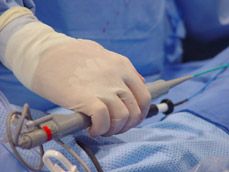Article
Post-PCI, Patients Do Well
Author(s):
It is well known that patients who get primary percutaneous coronary intervention (PCI) after an ST segment elevation myocardial infarction usually survive. But a new study from Denmark looked at a large population of such patients over several years to track just how many deaths there were each year and from what cause.

It is well known that patients who get primary percutaneous coronary intervention (PCI) after an ST segment elevation myocardial infarction usually survive. But a new study from Denmark looked at a large population of such patients over several years to track just how many deaths there were each year and from what cause.
The findings, published online the Journal of the American College of Cardiology by Frants Pedersen, MD, PhD and colleagues, found all these patients have good survival odds. The colleagues work at University of Copenhagen’s Rigshospitalet’s cardiology department in Copenhagen, Denmark.
About 7.3% of 2,804 Danish patients tracked died within 30 days. But after a year, only another 1.1% died of cardiac causes. Most deaths that occurred in the group (patients were followed for average of 4.7 years) were from non-cardiac causes. PCI was shown to be effective and safe.
“In the median follow-up period of 4.7 years, 717 patients died. Whereas 30-day, 1-year, and 5-year all-cause mortality rates were 7.9%, 11.4%, and 23.3%, respectively, the corresponding cardiac mortality rates were 7.3%, 8.4%, and 13.8% respectively.,” Pedersen wrote.
The main causes of early death were cardiogenic shock, anoxic brain damage due to cardiac arrest, and malignant arrhythmias.
“Patients who survive the first month after an STEMI treated with primary PCI have an excellent prognosis,” he said.
But the findings also suggest that focusing solely on whether the PCI procedures worked is not enough. Some of the non-cardiac deaths were likely avoidable if patients had taken preventive measures.
In an accompanying editorial comment, Mark Hlatsky MD, of the Stanford University School of Medicine, wrote “We cannot rest on our laurels after successful treatment of an acute MI.” Physicians should “recognize the factors, both cardiac and non-cardiac, that pose the greatest risk to patients who survive an MI and initiate the therapies and behavior changes that will reduce the risk of late mortality.” Those might include lifestyle changes and particular rehabilitation programs, for instance.





